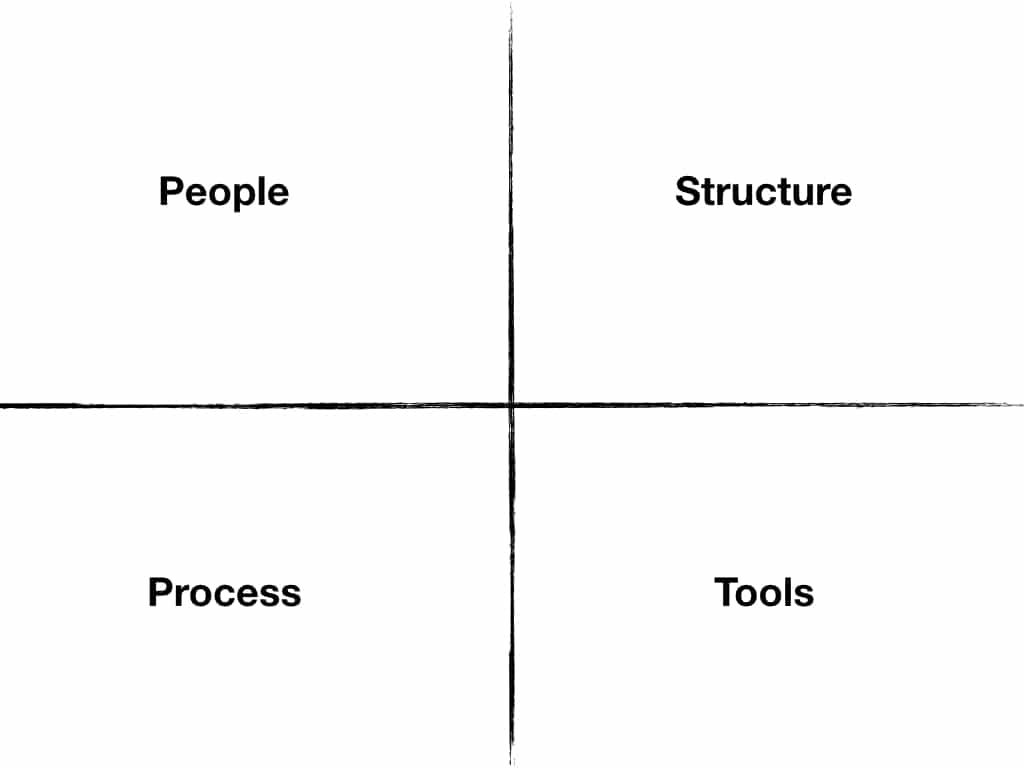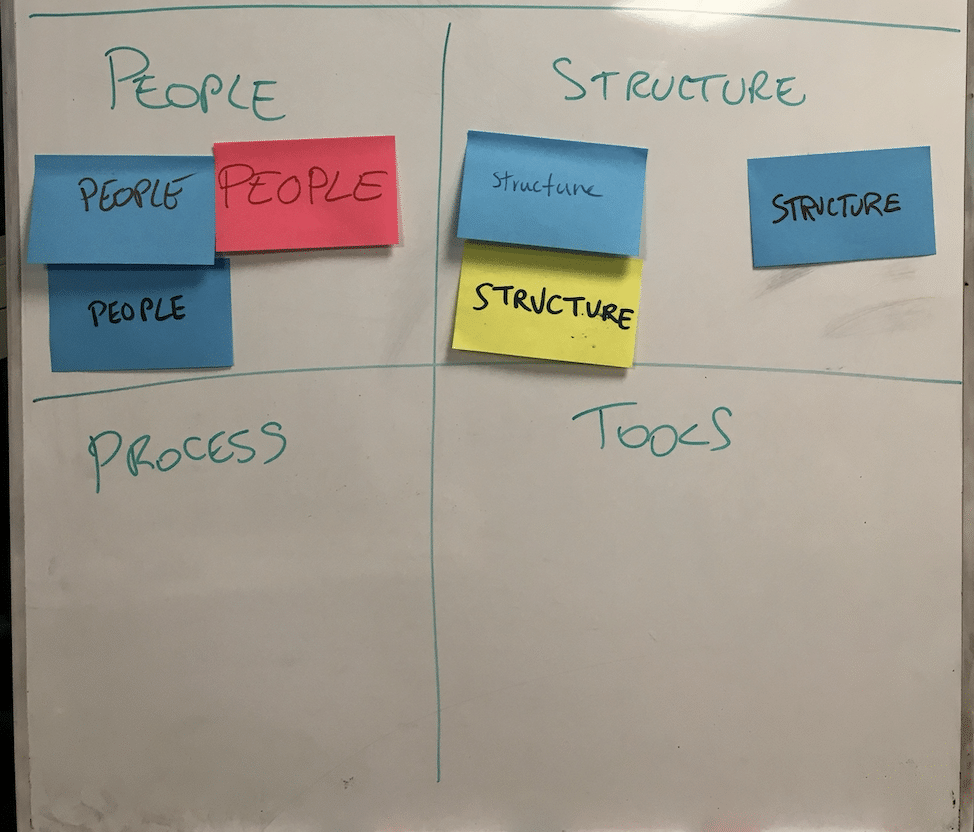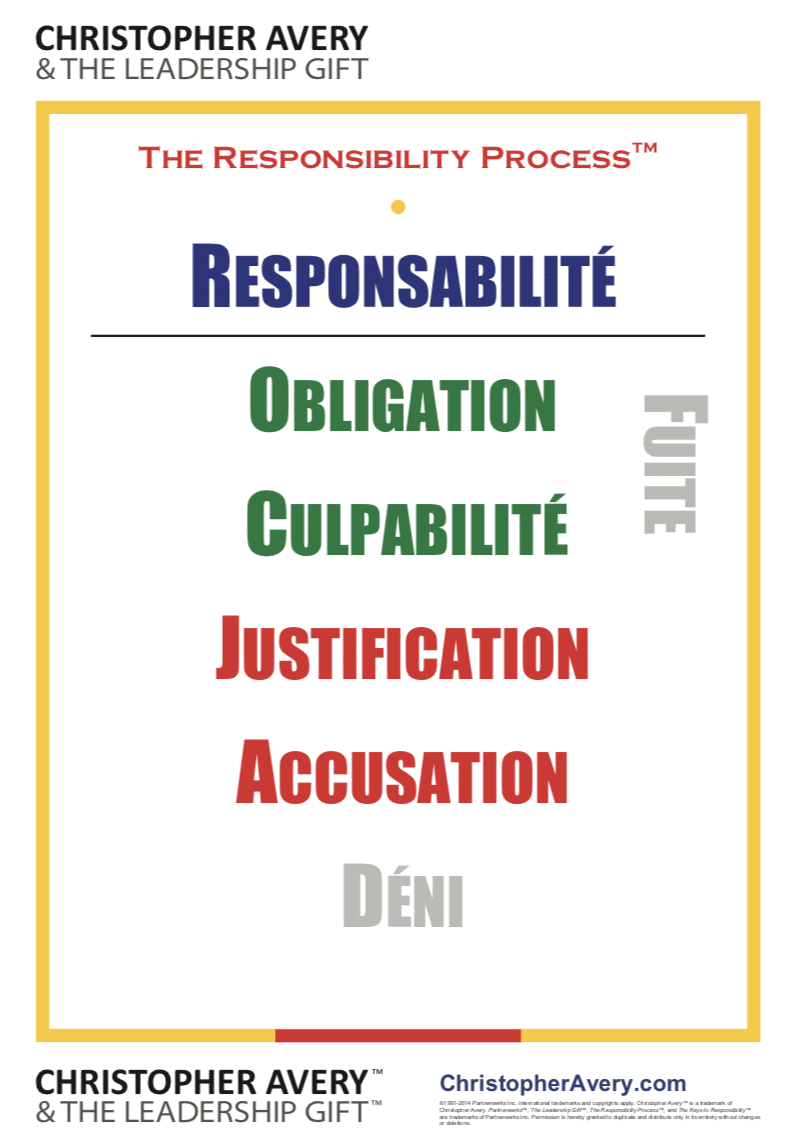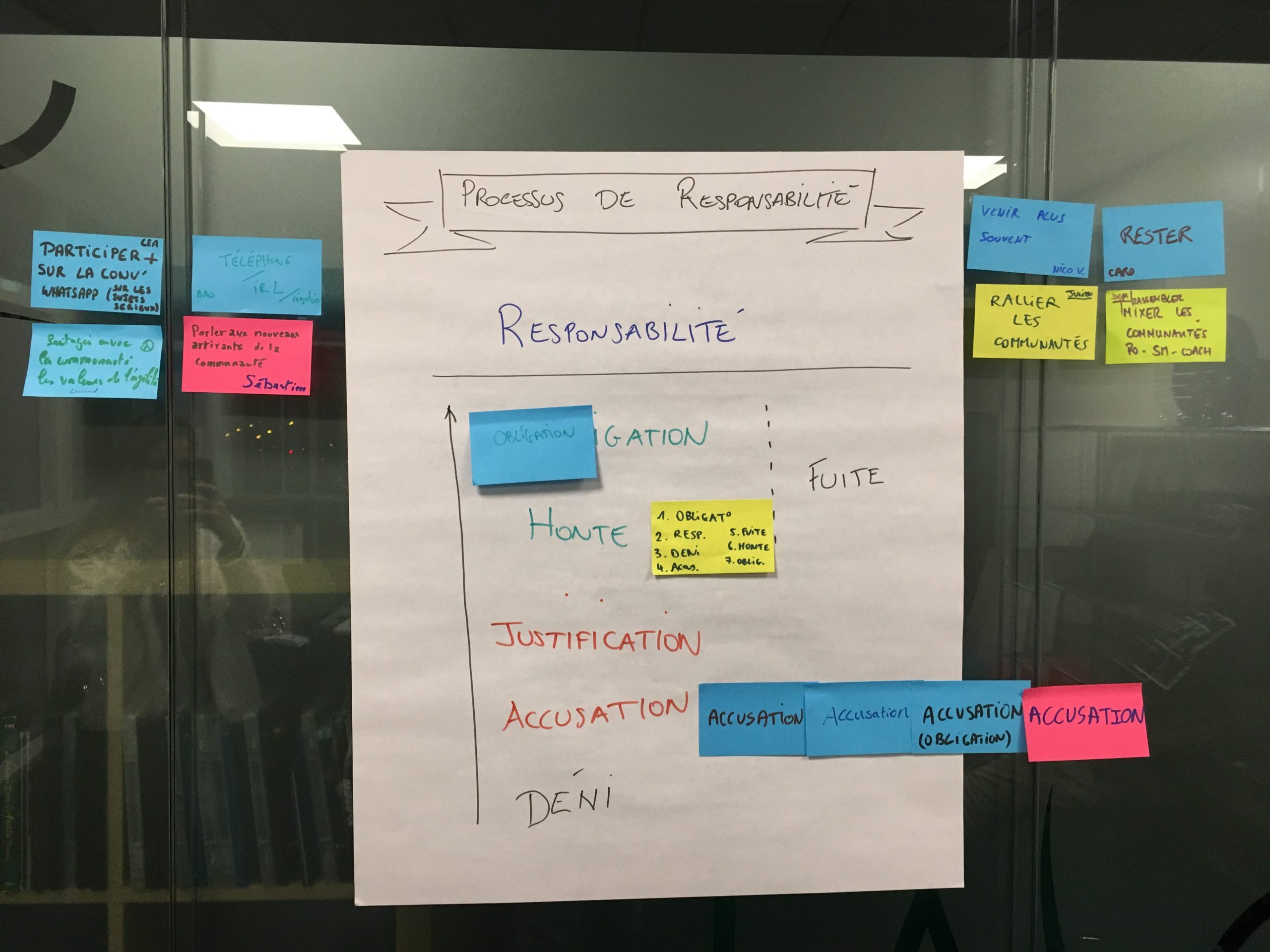
Photo by Ben Duchac on Unsplash
L’animation d’une rétrospective est considérée comme une étape clé de l’amélioration d’une équipe. Qu’en est-il dans le cadre d’une communauté ?
J’ai eu l’occasion de me heurter à cette problématique il y a peu de temps lorsque l’on m’a demandé d’en animer une pour la communauté de Scrum Masters de Soat. En effet, considérons nous une communauté comme une équipe ou une somme d’individus ? Comment permettre à chacun de s’exprimer tout en maintenant un cadre bienveillant lorsqu’un cadre flou et une diversité des attentes génère des tensions ?
Permettre à chacun de prendre du recul ainsi que ses responsabilités sur la situation actuelle me semblait important. Et si dans le même temps ils pouvaient apprendre quelque chose de nouveau, pourquoi s’en priver ? J’ai donc décidé de construire une séquence en plusieurs parties dont une utilisant le Processus de Responsabilité de Christopher Avery (que je détaillerais plus longuement dans un prochain article).
En voici un retour. Bonne lecture à vous ! 😉
Structure de Rétrospective

Cela fait maintenant un certain temps que les communautés de pratique s’installent au sein des entreprises.
Et cela fait peut-être autant de temps que j’entends les mêmes problèmes :
- manque d’implication des membres,
- une poignée de personnes motivées qui finissent par se décourager,
- une organisation pas toujours structurée,
- une intention d’auto-organisation qui ne porte que rarement ses fruits sans l’impulsion des créateurs de la communauté.
Cette communauté n’a pas fait exception et c’est d’ailleurs suite à une demande d’un de ses membres que j’ai accepté d’animer cette rétrospective pour eux.
Mes intentions étaient doubles :
- Animer la rétrospective et permettre aux membres de ressortir avec des actions d’amélioration
- Faire grandir ces Scrum Masters en herbe en leur apportant des éléments de réflexion et d’apprentissage : après tout, ils sont là pour ça !
Je leur ai donc proposé une structure de rétrospective spécifique, avec le souhait de véhiculer le message suivant :
Vous êtes les acteurs de cette communauté, prenez vos responsabilités.
La séquence fut donc la suivante :
- Rendre visible les attentes et l’état de satisfaction actuel des membres
- Créer un regard stratégique sur les changements à apporter
- Découverte du Processus de Responsabilité
- Aider au passage à l’action
1. Rendre visible les attentes et l’état de satisfaction

Grand adepte de la simplicité, j’ai simplement demandé à chacun d’écrire sur un post-it :
- Ce qu’il (ou elle) venait chercher au sein de cette communauté
- Une note de 0 à 10 correspondant à sa satisfaction actuelle vis à vis de cet objectif
Note : je trouve la combinaison des mots et des chiffres ensemble particulièrement intéressante. C’est ce qui fut à l’origine de mon article sur une variante au ROTI.

On voit ici une certaine disparité dans les résultats, ce qui m’apparait plutôt normal en réalité : il est facile d’être biaisé dans notre perception lorsque le cadre est flou !
Cependant, le fait de le matérialiser à au moins vocation à rendre visible ces disparités pour de futurs échanges.
2. Créer un regard stratégique

A partir des résultats précédents, j’ai invité chacun à réfléchir (en silence) sur les éléments qui ont pu empêcher leur score d’atteindre le 10 parfait.
Pour structurer leur réflexion, je leur ai proposé de s’appuyer sur le modèle suivant (dont je n’ai pas encore précisément retrouvé la source) :

Je leur ai par la suite posé la question suivante :
Quel domaine serait pour vous le principal levier d’amélioration ?
Le résultat fut le suivant :

Les résultats révèlent que les problématiques perçues et donc les leviers d’amélioration principaux sont au niveau des personnes et de la structure : aux interactions et au cadre donc ! 😉
3. Découverte du Processus de Responsabilité

Dans cette partie, j’ai tout d’abord décrit le modèle du Processus de Responsabilité de Christopher Avery.
En bref, ce modèle décrit le processus mental par lequel nous passons afin de gérer l’ensemble des situations de notre quotidien. Nous restons plus ou moins longtemps dans ces différents états mais progressons de manière séquentielle jusqu’à l’état mental de Responsabilité : là où nous pouvons utiliser nos capacités et notre pouvoir pour créer, choisir et réaliser.
Lorsque tout va bien, nous sommes naturellement dans cet état mais c‘est lorsque les choses ne vont pas dans la direction que l’on souhaite que nous basculons dans les états mentaux en dessous de la ligne :
- Accusation : Accuser d’autres d’être responsables des erreurs commises
- Justification : Utiliser des excuses pour des choses qui sont ce qu’elles sont.
- Honte : Se blâmer soi-même (souvent se sentir coupable).
- Obligation : Faire ce que l’on doit plutôt que ce que l’on veut.
- Fuite : Se blâmer soi-même (souvent se sentir coupable).
- Déni : Ignorer l’existence de quelque chose
Note : Je décrirais dans un prochain article plus en détail ce que propose Christopher Avery dans sa démarche pour plus de « Liberté, de Puissance et de Choix » (« Freedom, Power and Choice »).
4. Aider au passage à l’action

J’invite ensuite l’ensemble des membres de la communauté à réfléchir à l’état mental dans lequel ils étaient lorsqu’ils ont pensé à leur note et au domaine principal d’amélioration, puis de venir le coller sur le Poster que j’avais dessiné lors de ma présentation.
Le résultat est intéressant :
- la majorité se trouve en Accusation
- certains en Honte et en Obligation
Je leur indique donc que dans tous les états mentaux qui se trouvent en dessous de la ligne, on ne résout malheureusement pas le problème.
J’invite alors chacun à prendre quelques minutes et à réfléchir à la chose suivante :
Quelle est l’action que je suis prêt(e) à mettre en oeuvre, pour le groupe, dans un état mental de Responsabilité ?

L’exercice n’est pas simple pour tout le monde et c’est normal : il y a parfois une injonction à trouver une action dans les rétrospectives mais on ne nous demande pas toujours ce que l’on a vraiment envie de faire pour contribuer au groupe. Certains sont rapides, d’autres moins, d’autres décident même de ne pas émettre d’action mais cela en connaissance de cause.
Conclusion

Cette structure de rétrospective fut particulièrement intéressante pour moi à tester !
Non seulement elle permet de partager un modèle extrêmement puissant mais elle induit également un impact introspectif différent. En effet, les personnes n’expriment pas ouvertement les choses mais cela guide leur réponse lors des différentes phases. Un des grands intérêts est de ne pas se noyer dans les plaintes et les explications mais plutôt que chacun se pose la question de ce qu’il ou elle peut faire pour véritablement améliorer sa situation ainsi que celle du groupe.
Je pense néanmoins que le Processus de Responsabilité est à utiliser avec parcimonie : c’est un outil de prise de conscience et d’aide au développement personnel ce qui fait qu’il peut être assez confrontant pour certaines personnes. Cependant, utilisé à bon escient, il permet de cibler de manière très précise des comportements non constructifs et avec compassion, d’aider les personnes à libérer leur potentiel.
Enfin, elle fut un moyen pour moi de montrer que c’est l’intention qui pilote le format et non pas l’inverse ! En effet, j’entends beaucoup trop de Scrum Masters chercher des « formats de rétrospective » pour rendre les événements moins monotones, mais quel est véritablement l’impact sur le groupe ?
En espérant que cet article aura pu vous ouvrir quelques perspectives, n’hésitez pas à me faire un retour si vous le tentez dans vos équipes ! 😉







3 réponses
Origine de People – Process – Structure – Tools (or Technology)
C’est une simplification du modèle 7S de McKinsey qu’on retrouve dans l’article suivant (p2) :
The journey to an agile organization
https://www.ifsskillnet.ie/wp-content/uploads/2019/05/The-journey-to-an-agile-organization-final-1.pdf
Merci pour la précision ! 🙂
Merci pour cet article.
L’accent est mis sur la responsabilité individuelle pour que le « groupe » fonctionne, et dans ce cas qu’il réponde aux attentes de chacun (la boucle est bouclée…)
Si l’intention avait été de renforcer la collaboration pour atteindre un objectif extrinsèque imposé au groupe, j’imagine que ça aurait été différent. Est-ce que le « Responsability process » s’extrapole au niveau de l’organisation, inter-équipes (par exemple), pour assurer l’alignement ou couverture des responsabilités.
La matrice stratégique me paraît être un bon support de réflexion. Merci pour le lien Christophe.